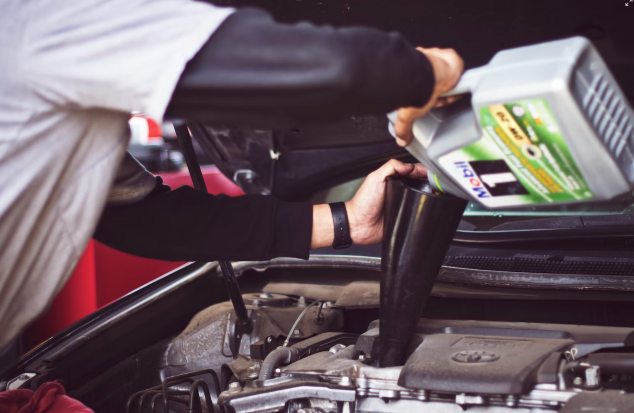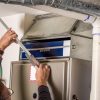
As your car starts to rack up more and more miles, it’s important to be aware of the maintenance it will need to keep running smoothly. Once you hit 100,000 miles, you should do some specific things to maintain your car and keep it in good condition. While some of these are best done earlier or at lower mileage, you’ll want to ensure they’re done at the 100,000-mile mark. Here’s a look at what you can expect.
Engine Oil and Filter Change
Keeping up with regular engine oil and filter changes is critical for reliable and efficient performance in your car. Synthetic oils can protect the internal components of your engine for longer than conventional motor oils, so if you have a newer vehicle, it’s a great investment towards prolonging its life. Even if you’re using conventional engine oil in an older car, you should still plan on changing the oil and filter at least every 5,000 miles – especially when you hit the 100,000-mile mark. Taking the time to maintain your vehicle regularly will help avoid costly repairs down the line and ensure that your car runs like clockwork for many years.
When it comes to the oil you use in your car, there are two main types: conventional and synthetic. Although both can help to keep your engine running smoothly, they have some essential differences that make them suited for different applications. Understanding these differences is crucial when deciding which type of oil is best for your vehicle. Conventional motor oils are made from crude petroleum that has been distilled and refined in a laboratory. On the other hand, synthetic oils are chemically engineered mixtures that provide superior protection against wear and tear under extreme conditions.
Transmission Fluid Change
Changing your transmission fluid is important in keeping your car running properly. As you hit the 100,000-mile mark, it’s especially important to ensure that you replace the fluid to keep your vehicle in top shape and avoid any issues down the road. Changing the transmission fluid can help extend its life and improve performance by reducing wear on internal components and providing superior protection against extreme conditions. In addition, it can also reduce stress on other parts of the engine, which helps to prevent a costly automotive repair or breakdown in the future. Taking a few minutes every 30,000 miles for a transmission fluid change will go a long way toward ensuring the reliable operation of your car for years to come.
Brake Pad Replacement
Brake pad replacement should not be overlooked when it comes to taking care of your car. As the vital component between your brakes and wheels, the life expectancy of the pads can usually be estimated at around 100,000 miles. Given the amount of wear they experience in our daily driving, such mileage is commonplace now. Therefore it would be important to plan ahead when replacing them to ensure safety on the road and enable smooth operations for longer periods of time. Keep this in mind when your car nears its 100,000-mile mark and have a trusted mechanic take a look — you’ll thank yourself later!
Failing to replace your brake pads when needed can have serious consequences. Not only does it reduce the safety of you and your passengers, but it can also lead to costly repairs down the line. Brake pads are a vital component between your brakes and wheels that help provide reliable stopping power for smooth operation on the road. As they experience significant wear over time, it is important to plan ahead when replacing them to ensure maximum efficiency and safety while driving. If left unchecked, worn-out brake pads can cause excessive wear on other parts of the braking system, which may result in expensive repairs or breakdowns due to a lack of maintenance.
Tire Rotation
Tire rotation is an essential part of car maintenance that should be noticed, especially when your car reaches the 100,000-mile mark. Regularly rotating your tires helps them wear evenly and last longer. It’s recommended to have your tires rotated every 5,000 miles or so to get the most out of them and keep your vehicle running smoothly. Doing this will help ensure safety on the road while also extending the life of your tires and keeping repair costs down in the long run. Taking a few minutes every 30,000 miles for a tire rotation will go a long way toward ensuring the reliable operation of your car for years to come.
Failing to have your tires rotated regularly can have serious consequences that put both you and your car at risk. While it may seem like a minor task, tire rotation is essential to keeping your vehicle running properly and safely on the road. Without regular rotation, the tread of your tires will wear unevenly, leading to decreased traction control in wet or icy conditions and increased braking distance when stopping. Additionally, failing to rotate your tires can cause premature tire wear, leading to costly repairs down the line due to a lack of maintenance. It is essential, especially when you hit 100k miles with your car, to take the time for regular tire rotations to ensure maximum efficiency and safety while driving.
Wheel Alignment
Wheel alignment is an important part of car maintenance that helps to ensure a safe, accurate, and comfortable ride. By ensuring your wheels are correctly aligned, you can help your car drive better by reducing the strain on its internal components and improving fuel efficiency. A well-aligned vehicle will also provide improved handling and a smoother ride overall. When it comes time for regular maintenance at around 100,000 miles, having a wheel alignment done should be high on your list of priorities in order to keep your car running smoothly for many years to come.
Taking care of your car when it hits the 100,000-mile mark is essential for maintaining its effectiveness and overall optimal performance in the long term. Investing in a few key maintenance checks like an engine oil and filter change, a transmission fluid change, brake pad replacement, and tire rotation can do wonders in improving your vehicle’s longevity. By following these steps and prioritizing regular upkeep, you will be able to keep your car running like new so that you can enjoy your journey and get back on the road quickly.






